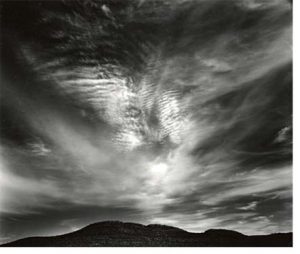
Before the advent of digital technology at the end of the twentieth century, the gelatin silver process had been the most commonly used method of making black and white prints since the 1890s. A negative image is transferred to light-sensitive paper that has four layers: a paper base, a white opaque coating of gelatin and barium sulfate that creates a smooth surface, the gelatin layer that holds the silver grains of the photographic image, and a protective gelatin overcoat. Properly exposed gelatin silver prints are quite stable if exhibited under controlled light conditions.
Until the 1970s, art photographers used this process almost exclusively to create high-quality black and white prints. Color photography was considered a commercial medium, not suited to serious artistic expression. Today, as fewer and fewer photographers are working in darkrooms, gelatin silver printing is quickly becoming an antiquated, historic process.